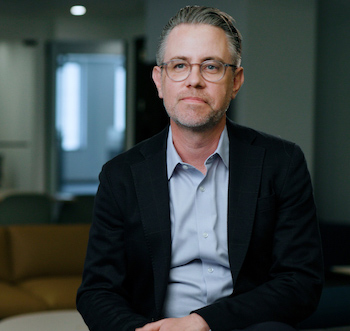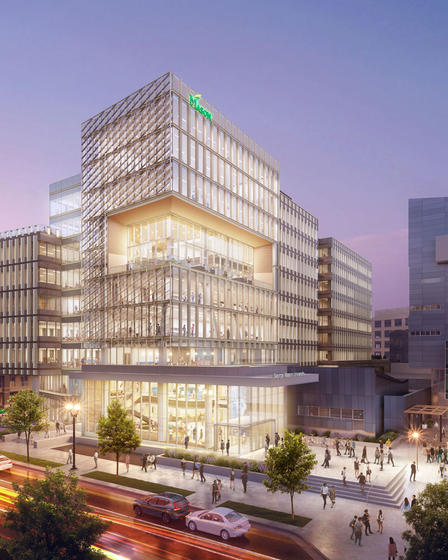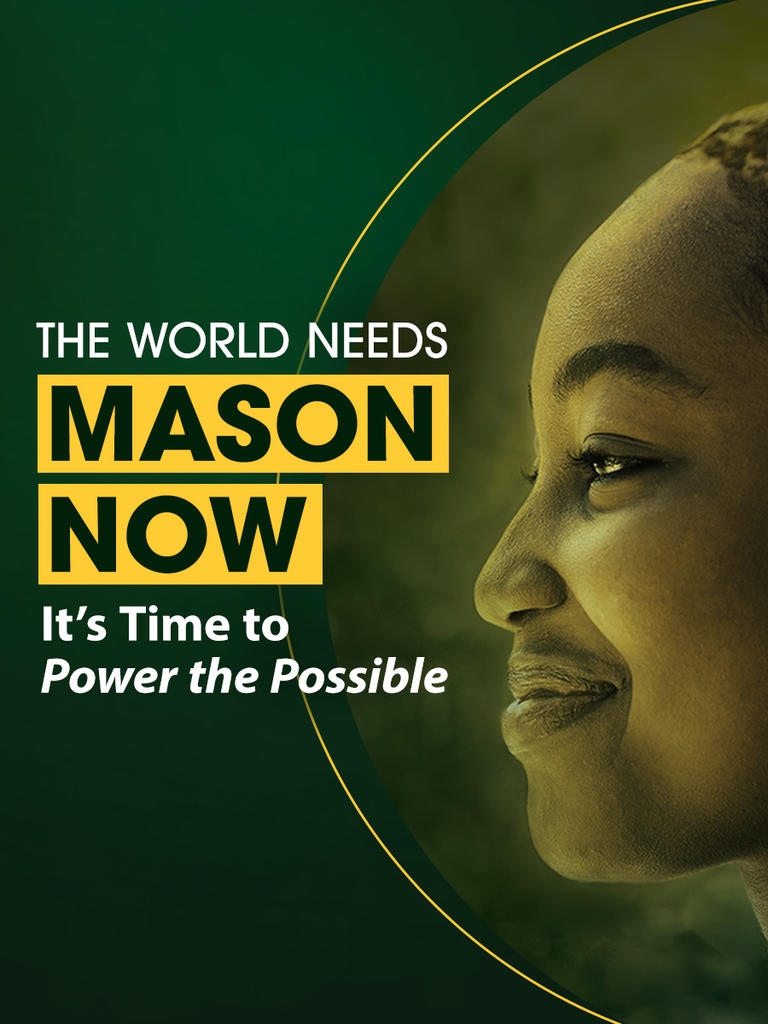Fuse at Mason Square, currently under construction in the heart of the Rosslyn-Ballston corridor, will be a new innovation destination uniting scholars, students, researchers, and policy and business developers, working together to accelerate the pace of change and solve our grand challenges.
At 345,000 square feet, the new George Mason University building will house R&D labs, classrooms, offices, corporate innovation centers, incubators, accelerators, convening spaces, and retail.

With that in mind, architect Rob McClure, of the firm Page, said the core of the building was designed to feel like a Main Street.
“The planning we developed was really to encourage people to mix together in that Main Street spine with collaboration spaces on both ends,” McClure said. “So when an industry partner comes up the elevator, they don’t go straight to their space. A Mason student doesn’t go straight to their classroom. They mix together in that Main Street spine.”
The thought of a Main Street inside a building is certainly evocative. Did you incorporate that sensibility throughout the building?
We really want to encourage what we call effective intellectual collisions. All the space, all the people coming out of the classrooms and labs are colliding within the hallways. We did wider hallways. It was about trying to make sure we were able to engineer and design a building that really encouraged this collaboration among its occupants, and bring the community in.
In your mind, what is the Fuse building?
We stuck to the idea of the mission for this building, and really thinking about using the building to recruit the best and brightest industry partners, students, and faculty for Mason.
Can you explain in more detail how Fuse will contribute to innovation and collaboration among industry partners?

We looked at a number of projects that had a similar idea of mixing industry partners and higher education. A lot of them were stratified. We said, ‘We’re not doing that, we’re mixing it.’ On every given floor of this project there is adjacency of industry partners to Mason, and the labs, the cool stuff, all the robotics. That space is on every floor. The idea is there’s this cross-pollination between all these different users on the floor. It’s really taking this ecosystem of innovation and putting it into practice architecturally.
Sustainability is one of Mason’s core missions. How did you incorporate that into the building?
We’re looking at a path to net zero energy. The way we approached the design of the project was to start the sustainability conversation with the basics, the things you would do as a good global citizen. But then we said, ‘What can we do further than that?’ First off, we’re using triple glaze glass. That’s like super insulated glass. It’s something you don’t see on most buildings.
My personal favorite is one of the features which I still can’t believe we’re going to do it. Basically, when you look at the building, most people are going to be, like, ‘Well, why is it angled?’ We looked at the sun, the optimal radiation, the angle, and we tilted these photovoltaic fins that generate electricity. It’s a striking statement. It is literally a symbol of Mason’s commitment to sustainability.
Since COVID-19, air filtration in buildings has become a big issue. How did you handle that?
We looked at all these different smart building technologies, such as the ability to take the HVAC, the cooling and heating and fine tune it based on the occupancy of the room. It even starts to look at the carbon dioxide that’s in a room and starts to adjust the flow of air, which also contributes to the wellness of people. You basically have a building that’s a lot smarter than most buildings.
Any other sustainability efforts to highlight?
There’s so many. I mean, it’s really about being a good steward of the environment. There are shower facilities that will allow people to ride their bikes to the building. Electric charging stations, there’s a ton. This project has a lot of green roofs. We choose natural (plant) species and, hopefully, some pollinator types. There’s a ton of research that says access to nature helps in terms of wellness. And it retains water and reduces the amount of water we’re putting back into the system, which is a great thing for the environment.
What does this project mean to you?
Mason’s mission is just spectacular. You look at its rise in terms of research, its rise in terms of diversity. It’s on a path, you can see it, and being part of that has been one of the best, most exciting projects of my career.

Built by grit, ability, and vision. Help make Mason's next 50 years even more impactful than it's first 50.
More Fuse at Mason Square Updates
- March 4, 2024
- February 26, 2024
- February 12, 2024
- February 7, 2024
- February 5, 2024
